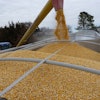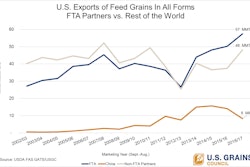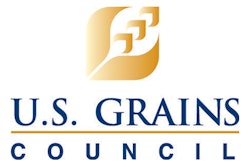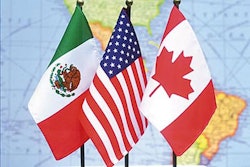美国谷物理事会领导人(USGC)和U.S. Soybean Export Council (USSEC) called for the continuation of strong partnerships built under the framework of the North American Free Trade Agreement (NAFTA) and other Western Hemisphere free trade agreements while at a joint regional buyers conference this month in Mexico.
“We strongly believe the friendships, partnerships and long-lasting relationships we have formed over more than 30 years of working throughout Mexico, Central and South America and the Caribbean are what has helped make our organization – and our grains industry – successful,” said Kim Atkins, USGC vice president and chief operating officer, who provided opening remarks at the conference.
“While policy challenges may exist – and we all know we are in an uncertain policy time - we are committed to working through this period by continuing to advocate for the important trade relationship that has developed between our regions.”
Mexico was the largest export market for U.S. corn in 2016/2017, purchasing 13.9 million metric tons (547.2 million bushels) worth $2.5 billion. Mexico was also the top market for U.S. distiller’s dried grains with solubles (DDGS), importing 2.06 million tons in 2016/2017. Since NAFTA entered into force, Mexican imports of these two commodities have increased 845 percent and 945 percent, respectively.
Colombia set a new record for U.S. corn imports in 2016/2017 with 4.73 million metric tons (186 million bushels), ranking as the fourth largest buyer of U.S. corn and breaking the previous record set in 2015/2016. Colombia also set a new record for U.S. ethanol exports at 13 million gallons, more than double the previous record of five million gallons set in 2013/2014. Since the beginning of the U.S.-Colombia free trade pact in May 2012, corn exports to Colombia have set a new record every subsequent year.
Exports of U.S. corn to Peru, the fifth largest buyer in 2016/2017, totaled almost 2.99 million metric tons (nearly 118 million bushels), a 25 percent increase year-over-year. Since the United States–Peru free trade agreement entered into force, corn exports to Peru have increased 805 percent.
Floyd Gaibler, USGC director of trade policy and biotechnology, spoke to the group and provided the Council's perspective on the impact of these trade agreements on the North American food and agriculture sectors. He emphasized how NAFTA has provided the trade policy basis for the most efficient and effective interregional grain and livestock value chain the world and, as a result, increased demand for feed and food.
“While NAFTA has served our industries well, we can improve upon that foundational work to seek even more improvements,” Gaibler said. “The ultimate question, however, is can we overcome all of the challenges and political uncertainty to set a gold standard trade agreement with our closest neighbors and best customers.”
In addition to discussing the benefits of international free trade agreements like NAFTA, the conference also covered an array of topics including the objectives of sustainable development as well as updates on supply, demand and quality of U.S. corn, DDGS and soy.
“Farmers in the U.S. are working around the clock to produce a high-quality grain products that can be used for feed, fuel and food both domestically as well as to be exported to our partners around the globe,” Atkins said. “U.S. farmers know that our growth lies beyond our borders, and that our success depends on building markets, serving customers, working to achieve better trade policy and engaging with the world.”
Learn more about the Council’s work in the Western Hemispherehere.




















